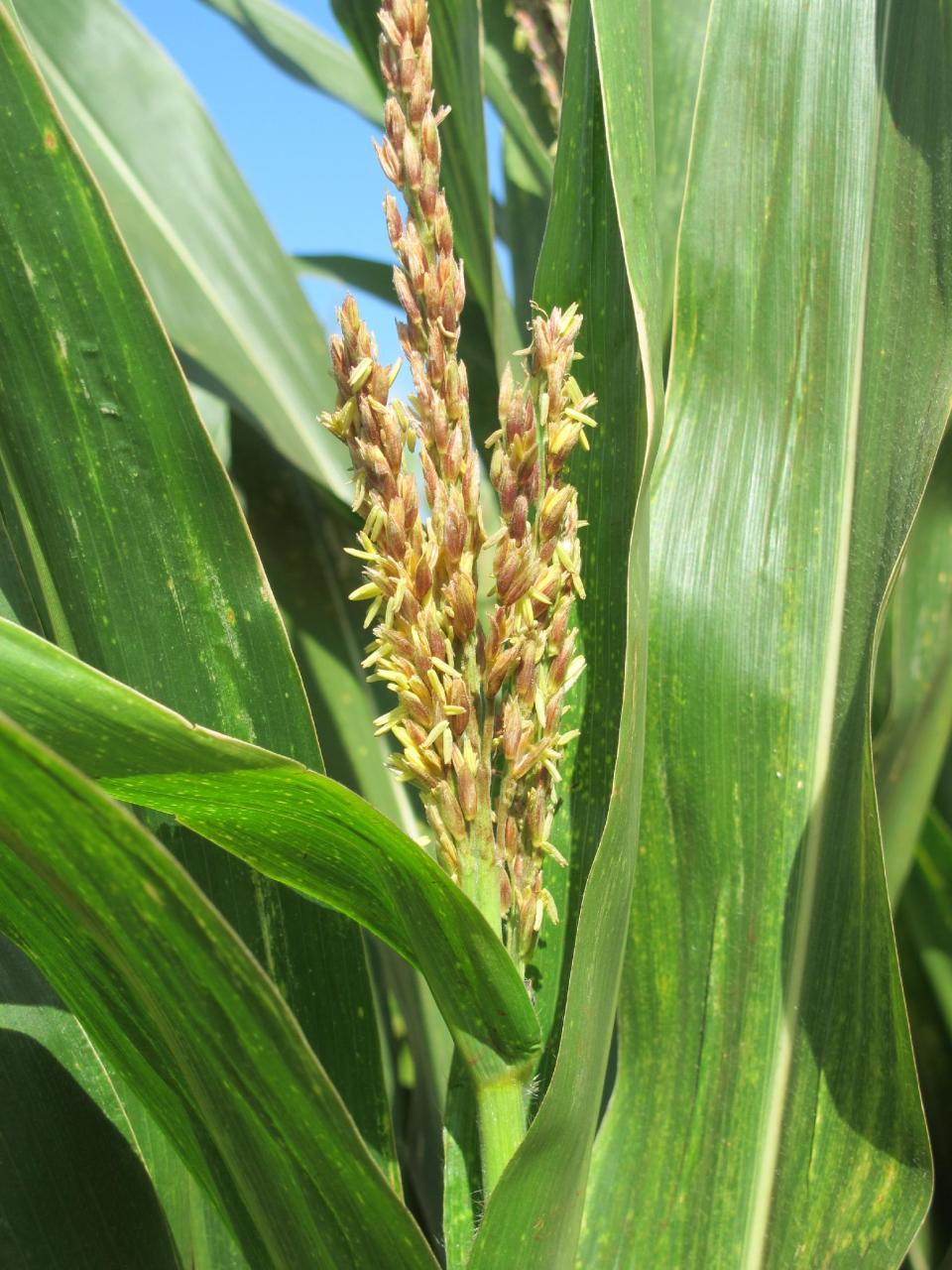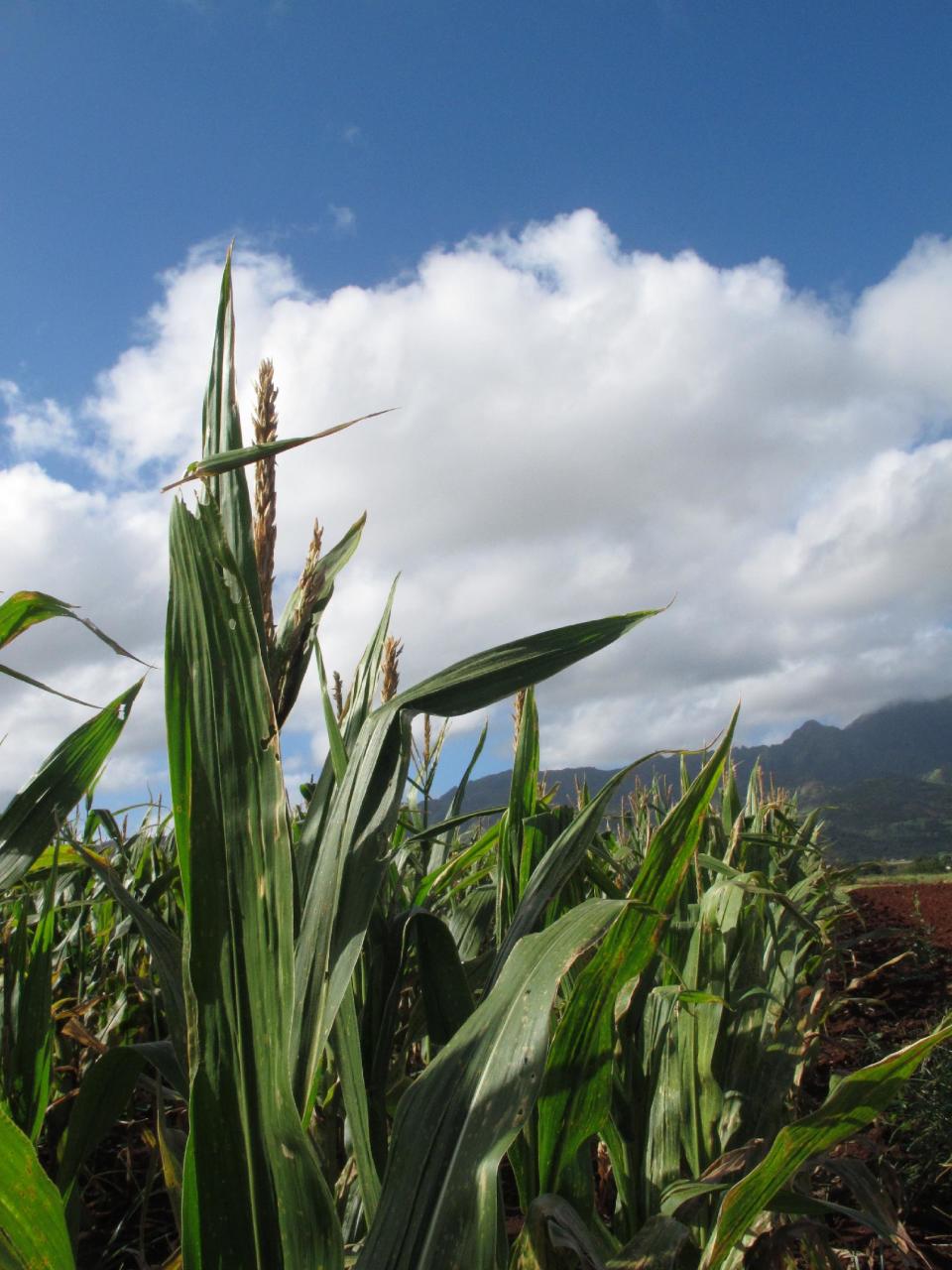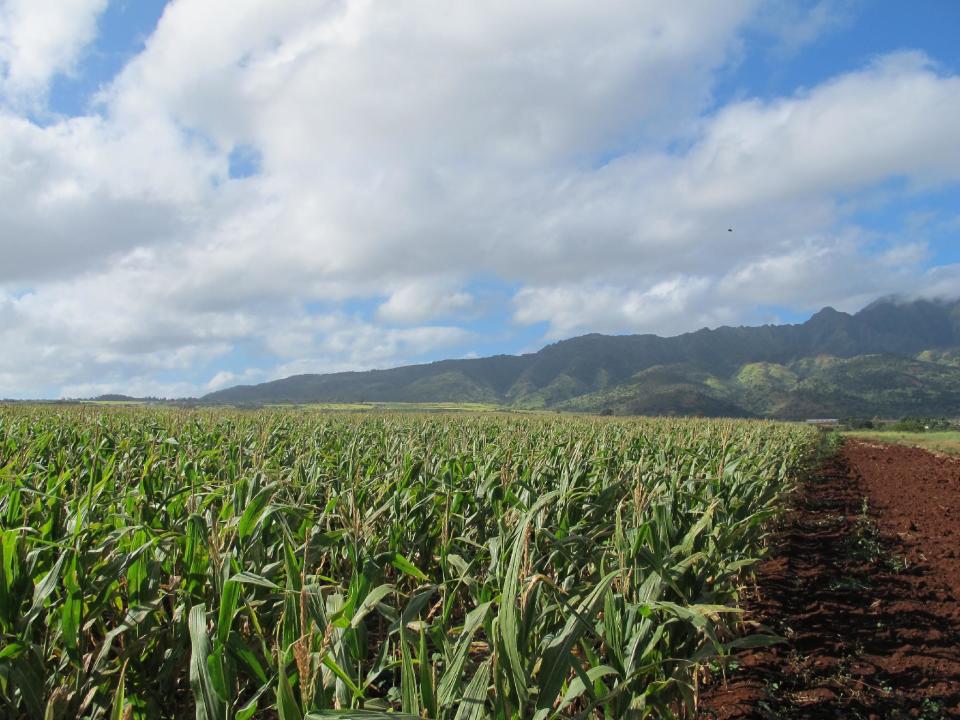Hawaii is genetically engineered crop flash point
WAIALUA, Hawaii (AP) — You can trace the genetic makeup of most corn grown in the U.S., and in many other places around the world, to Hawaii.
The tiny island state 2,500 miles from the nearest continent is so critical to the nation's modern corn-growing business that the industry's leading companies all have farms here, growing new varieties genetically engineered for desirable traits like insect and drought resistance.
But these same farms have become a flash point in a spreading debate over genetic engineering in agriculture.
Kauai and Hawaii counties have moved in the past several months to regulate genetically modified organisms and the pesticides the farms use. In Maui County, a group is collecting signatures for a potential ballot measure that would impose a temporary ban on the crops.
"People are very concerned, and it's my job as a council member to determine whether those concerns are valid and take steps to protect them," said Gary Hooser, a councilman in Kauai.
Hooser and the council passed a law last year, over the mayor's veto, to require large farms to create buffer zones around their crops and to disclose what pesticides they use. The law is set to take effect in August.
Seed companies with Kauai operations — Syngenta, Pioneer, BASF and Agrigentics — have sued the county to stop the law, saying they are already regulated by state and federal laws and there is no need for additional county rules.
"We don't plant anything that isn't permitted and approved through the proper regulatory agencies, be it the EPA, the FDA and UDSA," said Mark Phillipson, the head of Hawaii corporate affairs for Syngenta, referring to the Environmental Protection Agency, the Food and Drug Administration and the U.S. Department of Agriculture.
Hawaii's origins as a critical node in corn production dates to the 1960s when James Brewbaker, a recently arrived researcher at the University of Hawaii, noticed he could plant three crops a year in Hawaii's warm climate instead of one as in most places on the mainland.
Around the same time, Pioneer Hi-Bred was trying to squeeze more research into a year by using greenhouses and farms in Florida. Brewbaker suggested researchers come to Hawaii.
Seed farms grew as research expanded and more land became available as Hawaii's sugar and pineapple plantations became less competitive in the global market and shut down.
As of 2012, the most recent data available, seed crops in Hawaii were worth $217 million, up from $140 million in 2007. About 95 percent of it is corn. In all, they exceed the value of the state's next several largest crops — including sugarcane and macadamia nuts.
Developing a new seed variety takes about 10 to 12 growth cycles, said Phillipson. On the mainland, this could take 10 to 12 years. Being able to get three to four growth cycles a year in Hawaii dramatically shrinks the time it takes to bring a new product to market.
"It's getting your newest and best hybrids to market quickly," said Richard McCormack, who leads Hawaii operations for Pioneer Hi-Bred International, which is part of DuPont and has farms on Kauai and Oahu.
New genes — such as those making corn resistant to drought or floods — are inserted in a lab on the mainland.
Once federal authorities approve new varieties for planting, they're brought to Hawaii for two growth cycles or crop seasons to see how they perform in an actual field. The best ones are sent elsewhere for more growing.
Syngenta, for example, sends its best to fields in Missouri, Manitoba, Canada and Mexico to make sure the corn is able to thrive in the soil, wind conditions and temperatures of these various places, Phillipson said.
Today, about 90 percent of all corn grown in the U.S. is genetically engineered and has been developed partially in Hawaii in this way.
The discontent, however, has been simmering.
There has been little scientific evidence to prove that foods grown from engineered seeds are less safe than their conventional counterparts, but consumer concerns and fears persist — not just in the islands but around the country and rest of the world.
In Hawaii, residents have also expressed concern about pesticides used in the growing of seed crops.
Hooser said he introduced the legislation to get good information that would allow the county to determine whether the seed companies' operations were having any negative effect on the health of Kauai's people and the environment.
Hawaii County, which covers the Big Island, later adopted a law banning the cultivation of genetically modified crops.
The county created an exemption, however, for papayas already grown on the Big Island that have been genetically engineered to resist a virus that nearly wiped out the fruit in years past. No seed companies currently have farms on the island, so they're not affected by the law.
In Maui County, a group called Sustainable Hawaiian Agriculture for the Keiki and the Aina Movement is gathering signatures for a ballot measure to impose the ban until seed companies complete environmental and public health studies find their practices to be safe.
Monsanto and Dow AgroSciences, a unit of Dow Chemical, both have farms in Maui County.
State Sen. Clarence Nishihara predicted the wrangling over genetically modified crops will continue, in Hawaii and around the country.
"There's no one side that's going to say, 'OK, we had enough. We've given up on the issue,' right?" said Nishihara, who chairs the state Senate's agriculture committee. "They'll keep fighting it. Isn't that the American way?"




